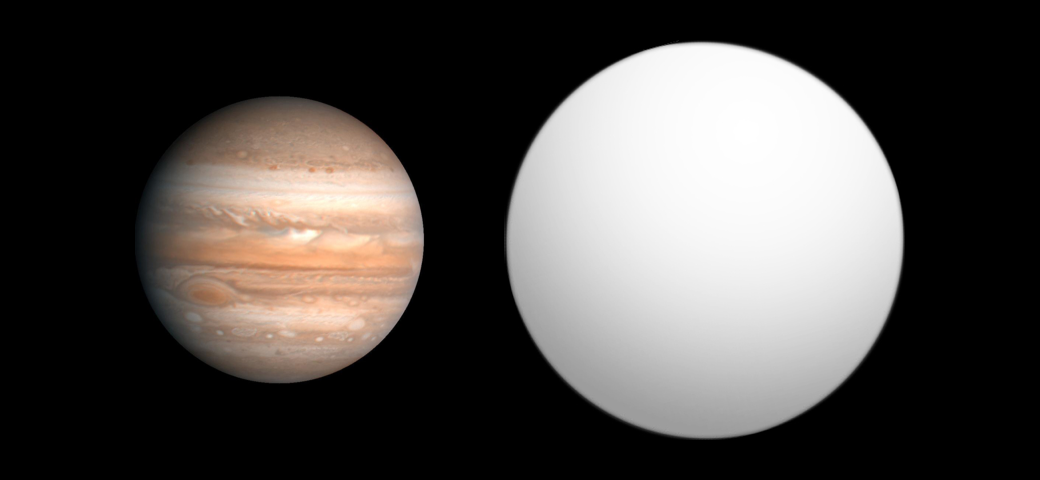The Spitzer telescope was launched on August 25, 2003 and carried into orbit by a Delta-2 launch vehicle. At the time of launch it
The telescope matrices were cooled with liquid helium,whose stocks came to an end in 2009. As a result, Spitzer lost the opportunity to receive high-quality images in the far infrared - officially this meant the completion of the mission, but the engineers decided to use the remaining devices.
In addition to disabled equipment, there is stillproblem. The observatory is gradually moving away from the Earth, so it is becoming increasingly difficult for engineers to quickly maintain the correct orientation of the solar panels, as well as direct the instruments for observation purposes.
NASA last received data from a telescopeJanuary 29, 2020, and the next day, mission engineers sent the telescope a command to enter hibernation mode. In the future, NASA management may decide to unfreeze the project, but this is extremely unlikely, the agency said.
Spitzer and Hubble will replaceJames Webb, the next-generation space observatory, is scheduled to launch in the next few years. The telescope will study the sky not only from ultraviolet to near infrared, but also at longer waves - this will allow him to see the galaxies of the early Universe.
Hi-Tech wrote a lot of news according toobtained from Spitzer: about the first lunar-like exoplanet, about a galaxy in the shape of a light sword, a hot jupiter with an unusual chemical composition, a butterfly nebula and the fusion of neutron stars. Now we have compiled a list of the most important discoveries of this observatory.
Saturn's Great Ring
Astronomers have long been aware of the existence ofSaturn’s rings, however, the largest was inaccessible to scientists due to lack of observation equipment. It is located at a distance of up to 160 million km from the planet. For comparison, if Saturn were a basketball, then this ring would pass at a distance of two-thirds of the basketball court from it.

The ring itself consists of the finest cold dust,the glow of which Spitzer noticed. Scientists believe that these particles appeared in outer space after a large meteorite crashed into one of Saturn's satellites - Phoebe. Particles rose from the moon and remained in the sphere of gravity of Saturn, forming an outer ring.
Exoplanets TRAPPIST-1
One of Spitzer's main discoveries is seventerrestrial exoplanets in the TRAPPIST-1 system. It is located only 40 light-years from Earth, while out of seven planets the size of ours, at least three may have conditions for the formation of life. One of the oddities of this system is that all seven of its planets, named from TRAPPIST-1b to -1h, are in orbit in the immediate vicinity of the star and from each other. In other words, they could well fit in the space between Mercury and the Sun.
 Image: Wiki
Image: Wiki
In a study of the system, scientists foundthat the two TRAPPIST planets closest to the star rotate quite close to each other, which allows them to create powerful tides. The tidal forces are so powerful that they can support volcanic activity on both cosmic bodies. This, in turn, allows you to save the atmosphere on both planets.
Now scientists continue to study the TRAPPIST-1 system.
Fullerenes in space
Fullerenes are molecules that area closed sphere of sixty carbon atoms. This is a rather unusual molecule, the hypothetical existence of which was discovered long ago, but scientists managed to synthesize it only in the 1980s.
 Image: Wiki
Image: Wiki
It turned out that in space these spherical molecules appear independently. In 2009, Spitzer discovered spectral traces of fullerenes around an extinct star turning into a white dwarf.
Very old and distant black holes
At the center of almost every galaxy aresupermassive black holes. Using Spitzer, scientists were able to detect some of the most distant supermassive black holes, which are located at a distance of 13 billion light years from Earth. They could probably have appeared less than a billion years after the birth of the Universe.

The first direct observations of exoplanets
Spitzer became the first telescope to discoverexoplanet light outside the solar system. Until that moment, scientists could only indirectly study them. It was thanks to the discovery of two hot Jupiters HD 209458b and TrES-r1 in 2005 that a new era began in the study of exoplanets and attempts to analyze other galaxies not only by the existence of large stars or black holes.
 Image: Wiki
Image: Wiki
As of the beginning of 2020, reliablythe existence of 4,173 exoplanets in 3,096 planetary systems was confirmed, of which 678 have more than one planet. In addition, there are several thousand more candidates for exoplanets, however, to obtain the status of confirmed planets, they need to be re-registered using ground-based telescopes.
The light of young galaxies
Thanks to Spitzer, it was not only possible to find the mostancient black holes, but also the youngest in the galaxy universe. Their light also went to Earth 13 billion years, respectively, scientists can observe them at a time when they were no more than 1 billion years old - this is an extremely small age for objects of this type. It is very important for scientists to study such objects, since this gives an understanding to science that in the first periods of the formation of galaxies the chemical composition of matter was approximately the same.
 Image: Wiki
Image: Wiki
Moreover, the age of the Milky Way is also about 13.2 billion years, while the Earth is about 4 billion years.